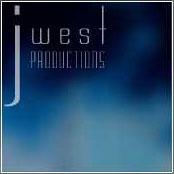Very good question! As stated by @bleirer above, I probably made things difficult/confusing by posting the question here because the Presentation forum is more suitable.Why would you post an image in a critique section if you believe it is perfect?
You are using an out of date browser. It may not display this or other websites correctly.
You should upgrade or use an alternative browser.
You should upgrade or use an alternative browser.
Best way to share my first 90 days intro to bird photography ?
- Thread starter JWest
- Start date
If you would like to post, you'll need to register. Note that if you have a BCG store account, you'll need a new, separate account here (we keep the two sites separate for security purposes).
Oh I'm sure but as noted above, the presentation forum is more appropriate unless it's something more specific I'm trying to get feedback on.While you may believe it’s an excellent shot, other individuals may see something in the shot that you may not pick up on. Or they may make a suggest you haven’t thought of.
Bill Ferris
Well-known member
That's a great question. The answer, IME, is that it opens one's work to review by others who bring objectivity to the critique and a valuable perspective to the process: how others see your work.Why would you post an image in a critique section if you believe it is perfect?
I periodically review my portfolio collection in LrC and demote several photos to a lower collection. It's only natural to become invested in a photo when it's first seen on a large screen and, again, when the processing is finished. That's good. We should take enjoyment from our photography. There's also some good to be found in revisiting a photo after some time when the initial blush of romance has cooled to see if the image still holds up. Does it still merit a place amongst one's best of the best?
Sharing your best work for open critique is another way of doing that. The viewer isn't emotionally invested in the image. Their experience of the image isn't influenced by the process of making and editing the photo. They don't know and may not care about the story of how the photo was made. They approach the photo with objectivity. If the image holds its own and has a story to tell, that will come through in the viewing.
So, yeah, share your best work. Constructive critique sheds light on how others see your work. It also may open one's eyes to elements of the photographic process - light, perspective, composition, and moment - one has been overlooking.
This part is important I think especially for people newish to photography because it can be easy to get caught up in the process it took for a difficult or lucky shot that really may have almost nothing to do with its merit unless it's some truly extreme situation.Sharing your best work for open critique is another way of doing that. The viewer isn't emotionally invested in the image. Their experience of the image isn't influenced by the process of making and editing the photo. They don't know and may not care about the story of how the photo was made. They approach the photo with objectivity. If the image holds its own and has a story to tell, that will come through in the viewing.
Many years ago, 1998, I had a personal work industrial shot of a glass factory and this 80's 4 door sedan just sitting out there like a moody movie set panel. Yes, it holds its own as an image but it's so much more if the viewer also realizes the complexities created by heavy rain, shooting on 4x5 film, at dusk. These details are appreciable by any keen eye, especially another photographer.
However, the viewer could not possibly know that the shot was made in 15 minutes after making a U-turn on a back road after seeing it off to the side with barely enough time to select composition, do it before dark, in heavy mid-atlantic summer rain, under an umbrella clamped to a stand, with a couple of sand bags, and some wind, because I shoot location architecture and happened to have all that stuff with me in my 1982 Volvo 240 ;- )
Back then I wouldn't even use a light meter. I knew rough exposure and for long times, would shoot a polaroid Type 54/B&W Polapan 100 as a test and compensate for reciprocity failure, then shoot 4 transparencies and one color neg. This was probably either a Fuji RDP 100 or a Kodak 100W which I used a lot for personal work. 2 sheets "normal", 1 sheet 1/2 under, 1 at 1/2 over. Neg for good measure. Also, it would have had a FLD filter. Or, this could have been and EPY which was kodak tungsten for which I then would have used the crazy FL filter combining Magenta and Amber to push it to fluorescent and daylight conversion. A shot like this would be f32 for the car to background and minutes for time.
So much about it the viewer could never even guess unless they do the same kind of work.
I think this link will take you to the shot:
JWEST PRODUCTIONS | Overview | 27
Ball-Foster Glass Manufacturing - Kitrell, NC 1998
 www.jwestproductions.com
www.jwestproductions.com

